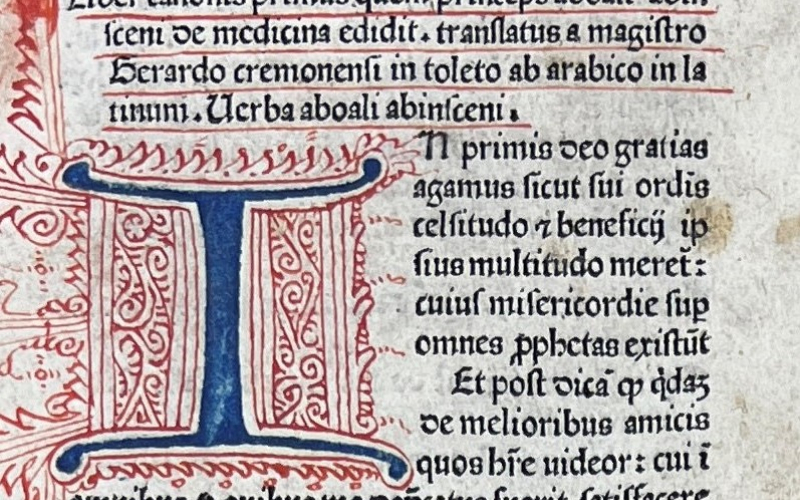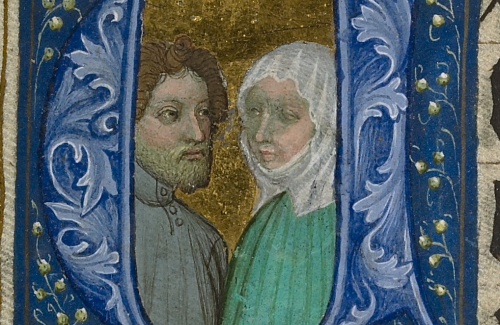#7 Avicenna
This ‘most’ item is another of our incunabula. While it might seem difficult to pick out the largest of these, when you see it on the shelf, there’s no doubting it’s ahead of all the others!
1. This monster of a book is 450 by 280 by 130mm.
2. It weighs 8kg.
3. Its full title in Latin is ‘Liber canonis primus quem princeps Aboali Abinsceni de medicina edidit’. It is the first book of Avicenna’s Canon of Medicine, a five book encyclopedia that was hugely influential in medicine for centuries after it was written in 1025.
4. This copy was printed in Padua in 1476, making it one of our oldest incunabula (see last Friday for one of the others)
5. It is printed on paper in a style that is designed to resemble a manuscript.
6. Avicenna is the Latin name for the polymath known as Ibn Sina who wrote on topics from medicine to psychology to poetry. His formal Arabic name was Abū ʿAlī al-Ḥusayn bin ʿAbdullāh ibn al-Ḥasan bin ʿAlī bin Sīnā al-Balkhi al-Bukhari.
7. He was an active scholar and physician in Persian courts during the 10th and 11th centuries, and is often described as the father of early modern medicine.
8. It contains generalities about medical science, including passages about muscles, nerves and veins, diseases, hygiene and treatments.
9. Originally written in Arabic, this Latin translation is by Petrus Rochabonella who was active at the University of Padua at the time.
10. The translation of Greek texts into Arabic then into Latin was a vital route of transmission for the works of scholars such as Galen and Hippocrates into Europe.

